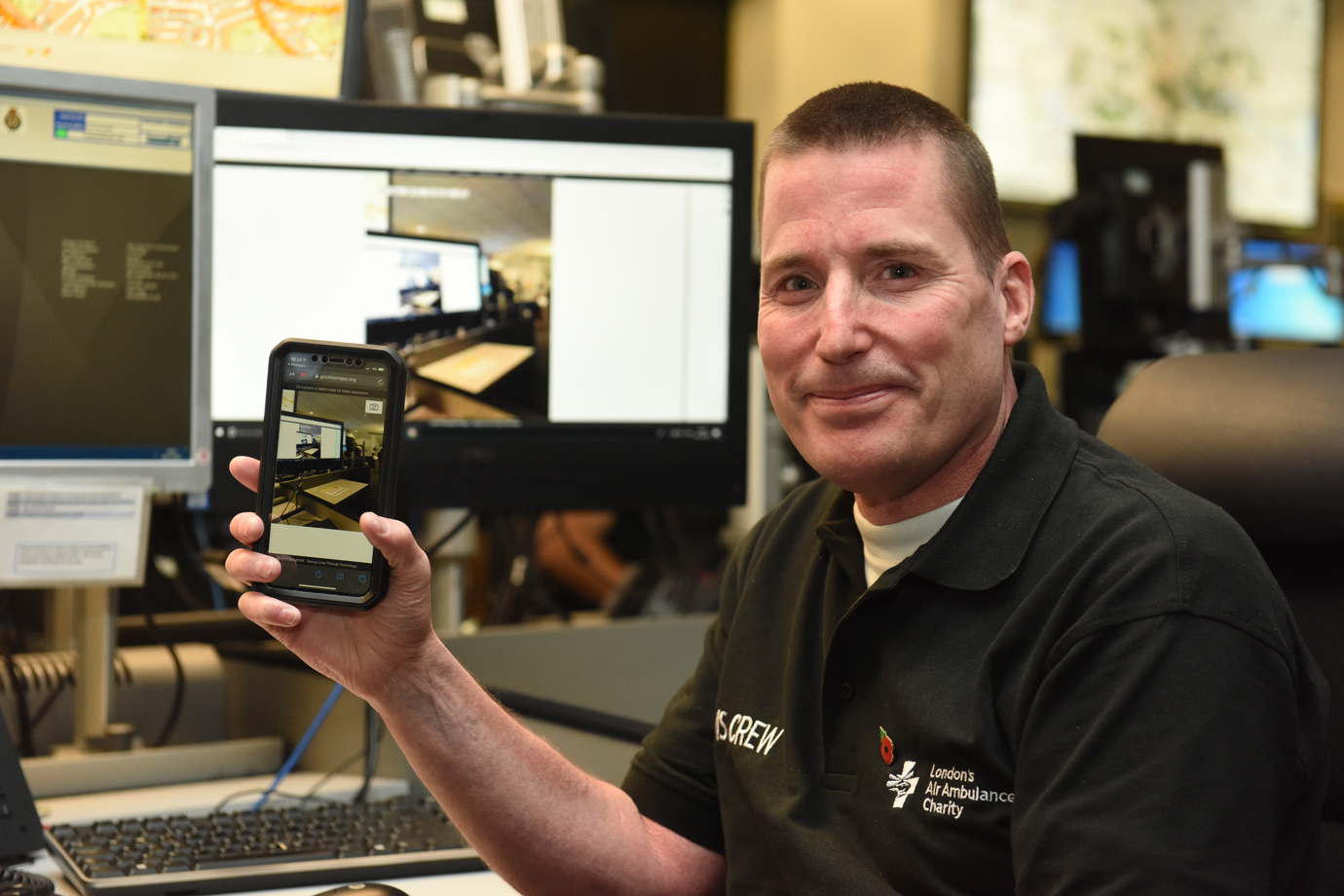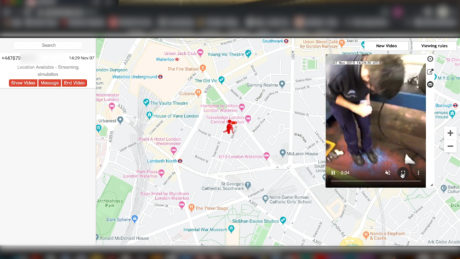Trauma medics use 999 callers’ mobile phone camera to help most seriously injured people in the capital
Trauma paramedics are using 999 callers’ mobile phone cameras to get ‘on-scene’ at serious incidents such as stabbings and road traffic collisions in seconds rather than minutes.
In the first use of the technology in the capital for serious trauma incidents, paramedics in the London Ambulance Service control room ask 999 callers’ to remotely access their smartphone cameras to quickly understand a patient’s injuries and help decide if resources like London’s Air Ambulance are needed.
If a caller gives permission, they are sent a text asking them to click and accept a link which then sends a stream from their camera phone to the medics in the control room. The platform also has technology medics can use to measure a pulse from the video stream and also can instantly locate the caller.
On average, London’s Air Ambulance is dispatched to five critically injured patients each day. The GoodSAM Instant-on-Scene platform has been used 67 times since it was introduced in October and is already helping London’s Air Ambulance trauma paramedics help patients within seconds and prioritise resources.
Chief Medical Officer for the London Ambulance Service, Dr Fenella Wrigley said:
“This technology is ground-breaking in London Ambulance Service and is already making an impact helping the most critically injured people in the capital.
“Viewing the scene ‘live’ on video helps ensure specialist resources, like the London’s air ambulance, are sent to where they are needed the most. The technology helps clinicians assess the patient’s condition and enables them to provide medical advice and support whilst ambulance and air ambulance clinical teams are on the way to the scene.
“We will be looking at how in the future we can extend the use of this technology in other areas of our ambulance service to ensure patients get the right care from the right clinician.”
Receiving accurate information quickly from a 999 caller is vital in the first moments after a serious incident. Data shows that a patient in cardiac arrest has a 50% chance of survival if treated in hospital, compared with only a 9% chance of survival on the streets of London.

Using the platform medics are better able spot any symptoms that may not be visible to someone without medical training and helps provide quicker treatment to the patient as the medical professionals are effectively ‘on scene’ – virtually – before they physically arrive.
Jason Morris, flight paramedic with London’s Air Ambulance Charity said:
“In ten years of working in the control room this is one of the biggest innovations that I have seen, helping to enhance the skills that we already have.
“Being able use GoodSAM Instant-on-Scene to see the patient at the scene of the emergency is revolutionising how we respond to life-threatening incidents. This cutting-edge technology is already improving patient outcomes helping us to get to patients quicker and if needed give life-saving clinical advice.”
The platform is accessible to everyone with a smartphone and doesn’t need a downloaded app to enable the video stream – which means anyone can use this resource. It is not like Skype or FaceTime and works on any smartphone in seconds.
Professor Mark Wilson, neurosurgeon and GoodSAM co-founder, said:
“Our mission is to save lives through technology, and we believe the ability to instantly see the mechanism of injury and how sick a patient looks can make a considerable difference to patient care.
“By advising the caller (and seeing for example how good someone’s cardiopulmonary resuscitation (CPR) technique is), we believe we can also provide care before we get there through the people already on scene. This with the ability to instantly locate people could herald a significant leap forward in pre-hospital care.”
The makers of the GoodSAM have donated it to the London’s Air Ambulance Charity for twelve months and if successful there is hope that it could be used effectively in other areas of the London Ambulance Service control room.

Follow us on social media: